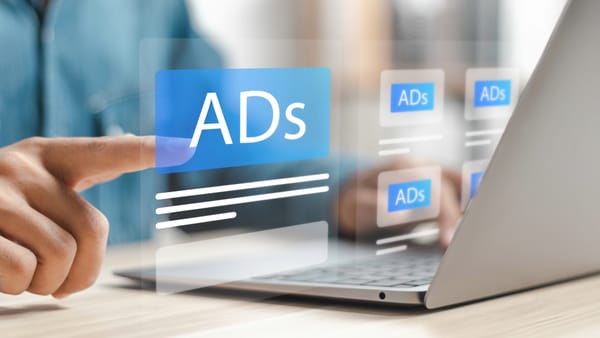How to Get Media Exposure Without Connections or a Big Budget

How to Get Media Exposure Without Connections or a Big Budget
One of the most effective ways to drive more traffic to your store is through media exposure. Established media outlets already have a built-in audience, so why not leverage that to send potential customers your way?
But it’s not as simple as calling up a popular show and asking them to feature your products. Journalists and influencers get pitched all day long, so you need to make sure your approach is interesting and relevant to their audience. So, how do you get started?
Build a List of Relevant Media Outlets
Major media outlets receive thousands of press releases daily, making it hard to stand out. Instead, look for smaller, more niche platforms where it's easier to get noticed. Do some research to find blogs, websites, or forums related to your industry. Many of these sites accept product reviews or guest posts.
You can start building your list by searching for:
- [Your product category] reviews
- [Your product category] bloggers
- [Your product category] influencers
Narrow your search to find outlets with an audience that aligns with your brand. Use tools like Google and Moz’s OpenSiteExplorer to identify blogs and websites that link to your competitors. These are likely to be good candidates for your outreach as well.
Once you’ve identified relevant media outlets, create a spreadsheet with the site name, the writer’s name, and contact information. If this feels like too much work, services like Fiverr or platforms such as Press Farm can help you for a fee.
Here are a few product-focused blogs to kick off your list:
- Shut Up and Take My Money
- Gear Patrol
- Thrillist
- Uncrate
- Cool Hunting
- Gizmodo

Crafting a Compelling Pitch
With your list ready, it’s time to start pitching. But don’t just send a generic email saying, “Please feature my product!” You want to build a relationship with these writers, as they can be valuable contacts for future features or reviews.
Here are some guidelines for a successful pitch:
- Make your subject line attention-grabbing.
- Keep it personal—don’t send the same email to everyone.
- Offer to send a product sample.
- Be concise, but include enough information to intrigue them.
- Make it easy for them to contact you.
Writing Effective Subject Lines
Your subject line is crucial—it's the first thing the recipient will see. It needs to stand out and motivate them to open your email. Think of it as a headline for your story. Use a headline analyzer tool if needed.
Some subject line ideas:
- New Product Launch: Samples Available for Review
- Following Up on Your Recent Article
- How I Turned a Hobby into a Business
The Email Structure
When writing your email, keep the reader’s perspective in mind. Journalists and bloggers are busy, so you need to make your pitch clear and concise.
Key elements to include:
- The Five W's: Who, what, when, where, and why.
- Inverted Pyramid: Put the most important information at the top.
- Newsworthiness: Make your story interesting by highlighting something unique, like:
- Does your product solve a common problem?
- Is it the first of its kind?
- Does it tie into an upcoming event or holiday?
Sample Email
Hi [Name],
I’m reaching out to see if you’d like to review a sample of our new product, [Product Name]. It’s launching in [Month], and we’ve already seen incredible interest from [Target Audience]. You can view more details here: [Link].
I think your readers at [Publication Name] would love this, especially since your recent article on [Related Topic] was spot-on.
Let me know if you’d like a sample or need further information. I’m happy to chat anytime.
Best,
[Your Name and Contact Info]
Follow-Up Strategies
Sometimes, emails get missed, so don’t be afraid to follow up. Wait a few days to a week before sending a polite reminder. Stick to a simple, friendly tone, and don’t be pushy.
If you haven’t received a response after three follow-ups, it’s probably time to move on and focus on other contacts.
Tip: Use email tracking tools like Mixmax to see if your emails are being opened. If they’re not, consider revising your subject line.
Turning This into a Routine
Don’t expect overnight success from just a handful of emails. Consistency is key. Make it a goal to reach out to a certain number of influencers or writers each week. Over time, this will increase your chances of getting featured.
But remember, quality is more important than quantity. Stick to contacts that are most relevant to your niche.
Leveraging Social Media for Publicity
Sometimes, you don’t have to wait for someone to write about you—social media can be a powerful tool for generating buzz. Join industry-specific groups or forums and share your story or product there. Journalists often hang out in these spaces, so if your post gains traction, it could catch their attention.
Some platforms where you can start:
- Product Hunt
- Hacker News
Reddit, in particular, has niche subreddits that could be a great fit for your product. Be sure to follow each subreddit’s guidelines before posting to avoid getting banned.
Conclusion
Instead of sending out mass press releases to every media contact you can find, focus on building relationships with those who are genuinely interested in your products. Even landing just one media feature can open up opportunities and drive significant traffic to your store.
Once you start gaining media attention, consider adding a “Featured In” section to your website that showcases logos from the outlets that have written about you. This adds credibility and can build trust with potential buyers.



